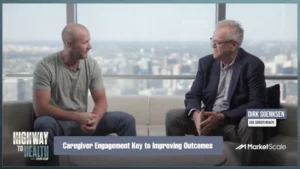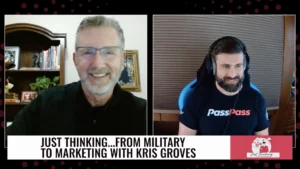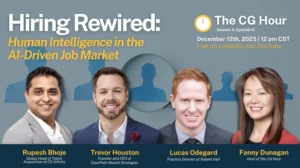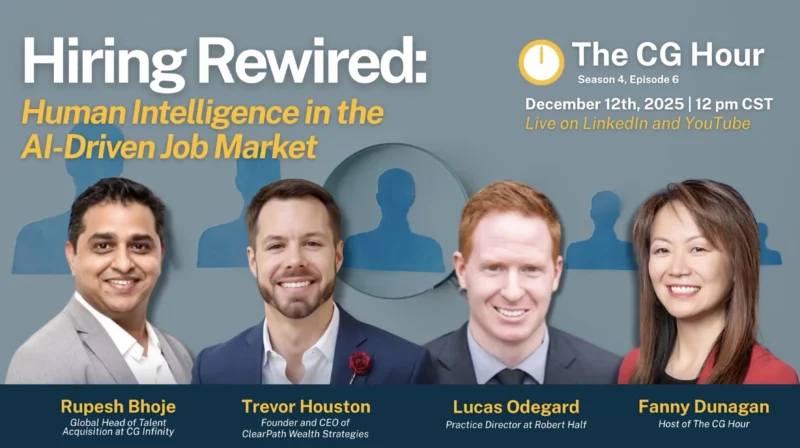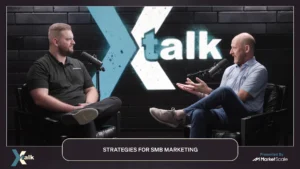Business Intelligence for the Small-Sized Company with Clint Bowers & Kellen Jemeyson of Smart Business Concepts
A decade ago, business intelligence sounded like more of a burden than enlightenment. Data was inaccessible, financial analysts were basically human calculators, and making important business decisions on KPIs derived from 7+ siloed data hubs stirred too much doubt to be useful. Things are different now; cloud technology and interoperability have made business intelligence intelligent again. On today’s podcast, we’re joined by Kellen Jemeyson & Clint Bowers of Smart Business Concepts, who have seen the evolution first hand. “Profitable companies understand the numbers,” said Bowers. With increased accessibility and comprehension, extensive KPIs are now in the hands of medium-sized, small and even start-up companies, encouraging proactivity instead of adaptability. Kellen and Clint break down how analysts have gone from calculators to consultants, the true power of cloud data on profitability, and some examples of how business intelligence might benefit a manufacturing-focused company. “It’s no longer going to be big that eat the small, it’s going to be the fast that eat the slow,” Jemeyson said.
HIGHLIGHTS FROM THE EPISODE
Daniel Litwin: I’m excited to dig in and get two great perspectives on something that’s really important which is business intelligence and I think Clint, you laid it our pretty well just initially that profitable companies understand their numbers. I think that’s just the basic concept here. Dig into that a little bit. What do you mean and you know that short phrase, short sentence, “Profitable companies understand their numbers.”
Clint Bowers: Yeah sure. Typically, when folks think about their numbers, they think, “Okay, well what has my accountant produced as far as each month and how much money did I make? How much money did I lose? What was my cost of goods? What was my gross margin? What was labor dollars?” Unfortunately, by the time that a business owner gets that information, it’s typically too late and so a business owner then starts to regulate their business whether it be small or medium-sized business. They tend to then start regulating their business off of how much cash is on the bank. And so when we talk about businesses and understanding their numbers, it’s more from a day-to-day operational perspective which business intelligence gives, empowers a business owner to do on a proactive basis. And so with a lot of the cloud-based technology that has come forth over the last three, four, five years, it has opened up for small and medium-sized businesses the opportunity to really understand what drives profitability on a day to day basis. And it’s not just for your large corporations that invest millions of dollars into technology.
DL: Right. And Kellen, you are in the trenches, working with these companies and helping them understand their numbers. What do you see as typically one of the biggest challenges in getting small to medium-sized companies wrapping their head around these concepts and getting them to utilize this data and information to the best if its ability?
Kellen Jemeyson: I think the first thing you have to get them on board with is the fact that financial statements and just basic financial data is not merely a means to produce a tax return. There’s a lot more that can be done with that information to convince them that they need to get out of the world of just living with lagging indicators, what’s the balance in my bank account? Do I have to pay any interest on this? Do I need to take out a loan which things like that, they all can be symptoms of a problem that can be solved earlier in the process if you have KPIs that show you where you’re trending, you can pretty accurately focus what your bank account balance is going to be in three months or six months and that can lead to more informed decisions, less panic decisions and more strategic thinking. If you get them onboard to that general concept, they can pretty typically steer you towards the data you need to collect for them and analyze for them and what their KPIs might be.
The biggest straw you see though is getting that buy-in from a client, I think, but once they realize how crucial it can be and how beneficial it can be, you can really start to turn a business around.
DL: Yeah, well and I think what I’m hearing from both of you is proactivity is really the key here, because if you’re just waiting to check your bank statement at the end of every month and it’s like, “How much money do I have in the bank?” and basing that on, “Okay, am I profitable or not?’” or using that as your index, it’s going to be too late. By the time there’s an issue, it’s too late to rectify it because you’re working backwards almost
CB: Yeah I think what we see a lot thought is Kellen mentions getting the buy-in and that’s right. The step before that which is even I think harder is introducing a business owner to even what the capabilities are.
KJ: Or yeah the concept of business intelligence.
CB: That it’s even accessible to them at a very affordable price not only on just the technology, but on implementing it and getting it set up and just the fact that they could have that, they’re running their business day to day, they’re not researching what’s the latest cloud technology that I can use to report on these KPIs and those kind of things and much, much less the ability for some of the technology to have machine learning where it can analyze seasonality and weather patterns. That is actually available for small and medium business, but when they’re running their business day to day, they just can’t get to that place, so even just having them look up and start to ask questions is probably the biggest barrier to a small business adopting a business intelligence cloud-based platform that is delivering KPIs to them on a daily, weekly basis.
DL: Right, so business intelligence has evolved a lot and even just the last decade, pretty dramatically to the point where small and medium-sized businesses now have access to this kind of technology and this great and honestly crucial aspect of business ownership. So tell me a bit about, from either of you, just that evolution in business intelligence where we were at 10 years ago, how honestly archaic it was and then where we’re at now and how that evolution has really empowered these smaller businesses?
CB: Yeah, I think it’s actually been the same for small, medium and large businesses. 10, 15 years ago, it was on-premise, disparate systems that did not talk to each other.
DL: So tell me a bit about that. So basically, you had a different system for every function and they just weren’t communicating the data to each other, so you couldn’t analyze it?
CB: Yeah, so maybe from a manufacturing perspective, you have a system that runs your production and they may receive the good and kick out the finished goods. Then you have a separate accounting system, you have a separate payroll system, you have a separate sales system, a separate lead generation or just customer tracking or profitability, maybe that’s in Excel. And so marrying all those up is or was a very data-intensive exercise that really, only the large companies could afford to hire the people, the analysts to do that, and the typical role of the analysts was just crunching numbers and data and spitting out these reports
KJ: Once a month by the way.
CB: Yeah, once a month and so although different scales, the same problem for all businesses across the board.
DL: Right, so it was intermittent, it wasn’t consistent and basically, the financial analyst wasn’t really getting to consult much or really help guide. It was mostly just giving out the numbers and then it’s like, “Do it this way you will.”
CB: Right, and so now with the technology that’s available, the role of the analyst has changed a lot. In fact, it becomes more of a story-telling exercise, asking the next question. There’s been a lot of liberal art degree graduates that have been hired as an analyst role because they can tell a story a lot better than someone that’s been trained to just analyze data and put together Excel spreadsheets, so communicating that. And universities, they’ve started to create these particular Master’s degrees around a data analysts and training them in a much different way to ask the next question, to look at trends and to bring solutions rather than, “Here’s a report, now you guys go figure out what this even tells us.” So it’s changed a lot and that’s available to large businesses, but from a small business and medium business perspective, you can outsource that function. We work with plenty of small businesses where they don’t have the expertise in-house. They don’t need a full-time person, they need someone to set it up, come in, monitor and then start to provide some clarity around what it means and then let the business owner take the action. So the technology is starting to create that level playing field across the spectrum of large to small business.
DL: Definitely and I mean being someone who advises these companies, Kellen, how have you seen the technology make your job easier or just more comprehensive? I mean you get to get in there and have authentic conversations with people because the technology, this cloud technology is really assisting the more labor perspective of your job?
KJ: Right and it’s kind of been fun in my career because early on, a guy in role you could just be a human calculator, because the systems weren’t doing it for you. They were giving you raw inputs and a lot of the number crunching and that type of more traditionally analyst work that Clint just described wasn’t done for you, it couldn’t be done for you. It couldn’t be done timely for you, so what I see now, I’m getting to the fun part a lot faster with the help of technology, so I get to go and have those discussions with KPIs and what you should do, this is a trend I’m seeing based on this KPI and it’s probably going to lead to this cash impact or this tax impact etcetera, etcetera, you get to that fun place of being a business partner a lot faster than you would otherwise.
DL: Right.
KJ: And that it beneficial to everyone. It’s beneficial to me because I can start to influence the clients faster and it makes you more of an asset to that client than you would be otherwise.
DL: Yeah, it makes you valuable.
KJ: Right, it makes you a lot more valuable. And you’ve seen the technology increase over the last 10 years is parallel to what a CPA or what a finance expert has to be as well. Like Clint said, you can’t be a human calculator in an office anymore that just produces a piece of paper. You have to be able to articulate meaning because otherwise you’re going to be replaced by the cloud.
For the latest news, videos, and podcasts in the Software & Electronics Industry, be sure to subscribe to our industry publication.
Follow us on social media for the latest updates in B2B!
Twitter – @TechMKSL
Facebook – facebook.com/marketscale
LinkedIn – linkedin.com/company/marketscale




